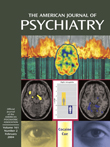“More than kisses, letters mingle souls,” wrote John Donne. Freud was a prolific correspondent, and reading a selection of his estimated 20,000 letters today allows one to appreciate soul elements that disappear in the biographical blender. The books reviewed here cover the development of the psychoanalytic movement (1907–1925) and Freud as a tiring giant (1933–1937), respectively. The Abraham book, replacing a selective 1965 edition, joins major correspondences of Freud with Jung, Jones, and Ferenczi, and smaller ones with Wilhelm Fliess (like the Abraham collection, redone in full), Lou Andreas-Salome, Oskar Pfister, and Georg Groddeck.
Karl Abraham (1877–1925) was a Berlin psychiatrist and training analyst who was a loyal member of Freud’s Committee or Ring. These letters span the beginning of the psychoanalytic movement, the disaffection of Alfred Adler and Carl Jung, World War I, the early journals and meetings, the start of the International Psychoanalytic Association and training institutes, the theories and publications of both writers, and strains within the Ring over the growing independence of Ferenczi and Rank. The following example of the 500 letters is from Freud to Abraham on Dec. 26, 1908:
The hostilities by which we are surrounded also remind us to hold together. Morton Prince, who has always been a kaleidoscopic character, is this time really lamentable. Where do the Americans expect to get with this fear of public prudery?…He always begins by over-compensating for his cowardice and then withdraws into it.…
My warmest congratulations on that patient of yours whose analysis gives you so much pleasure!…There is only one worry.…It has often been my experience that precisely those cases in which I took an excessive personal interest failed, perhaps precisely because of this intensity. When such a “test” case succeeded, however, I found that the previously constituted jury withheld its approbation by its silence. The opportunity of demonstrating our skill will come eventually. (pp. 71–72)
In two paragraphs we get spicy bites of history, politics, clinical experience, and theory. The editor, Ernst Falzeder, commendably provides background on people and events. The pleasure of reading a meaningful primary text balances the intermittent tedium of reading about routine business. An indispensable volume for historians, Complete Correspondence of Sigmund Freud and Karl Abraham, 1907–1925, rewards casual reading too, but it might have benefited by putting trivial matters in smaller type.
Susan Stanford Friedman, chair of the English department at the University of Wisconsin, has written extensively on the American poet H.D. (1886–1961), whose Tribute to Freud (1956) is enlarged upon here. In her mid-40s, H.D. had 16 weeks of analysis in 1933 and another 9 weeks the next year. Her letters to her companion, English novelist and wealthy heiress Bryher (born Annie Ellerman), describe her encounters with the initially terrifying, later nurturing “Papa.” Analyzing Freud includes 28 Freud letters, most unpublished heretofore, and letters of others, including Havelock Ellis, Hanns Sachs, Ezra Pound, Anna Freud, and Conrad Aiken. Narrative sections introduce the letters; there is an attractive group of photographs, helpful footnotes, and a biographical appendix.
At the age of 76, Freud, answering a request for analysis (13.XI.1932), was no blank slate:
I am old, often ill, and only work for 5 hours with students or patients. There isn’t a long waiting list anymore, clients in need of help prefer younger people. Until recently my fee was $25 an hour; as a result of the general impoverishment, I have lowered this to $20 or $15… some of my adult children are out of work and have to be assisted or supported. (p. 7)
The narrative and the letters bring into focus the rise of Hitler and its impact in Vienna—political turmoil, demonstrations, brawls, and bombs. Bryher’s funds helped many Jews (analysts among them) leave Germany; she supported several friends and liberal causes and even produced a film featuring H.D. and Paul Robeson.
The letters, a cornucopia of daily life in exciting and disturbing times, mix cultural and political commentary, canine antics, “dirtful” gossip, sex (code word “zoo”), and H.D.’s dreams and their virtuosic interpretation by Freud. In what H.D. called their vers libre relationship, he broke his own rules by giving and accepting gifts and sharing his likes and dislikes. H.D. and Bryher, each previously married, became partners and co-parents of H.D.’s daughter. Their escapades with straight, bisexual, and homosexual men and women percolate through the story; they spared Freud much of the detail while analyzing him! H.D. turned her analytic experience—augmented with astrology—into counseling sessions with friends.
Professor Friedman cites Freud’s relevant theories in context. She sees H.D. as “by far the most gifted poet” among his analysands, one greatly helped by the experience. Those who question the scientific or clinical merits of psychoanalysis will not be swayed by this volume, but anyone interested in the power of self-observation in the context of a supportive relationship will find grist for many mills. In the editor’s coda we read,
The success of the “talking cure,” at least in her case, is located in her ability to transpose the drama of analysis she experienced with Freud into the “writing cure.”… Vulnerable in Vienna during the rise of Nazism, both H.D. and Freud used psychoanalysis not as a hermetically sealed realm of escape from the gathering storm but as a means of understanding the foundations of violence and desire in the human psyche and their manifestation in the dialectical play of eros and thanatos on the larger stage of history. (p. 538)
A stimulating mix of raw data and interpretation, intimate feelings and cultural overview, Analyzing Freud invites us to eavesdrop on some remarkable and often admirable intellectuals coming to grips with life in the 20th century and even molding it in their own image.

